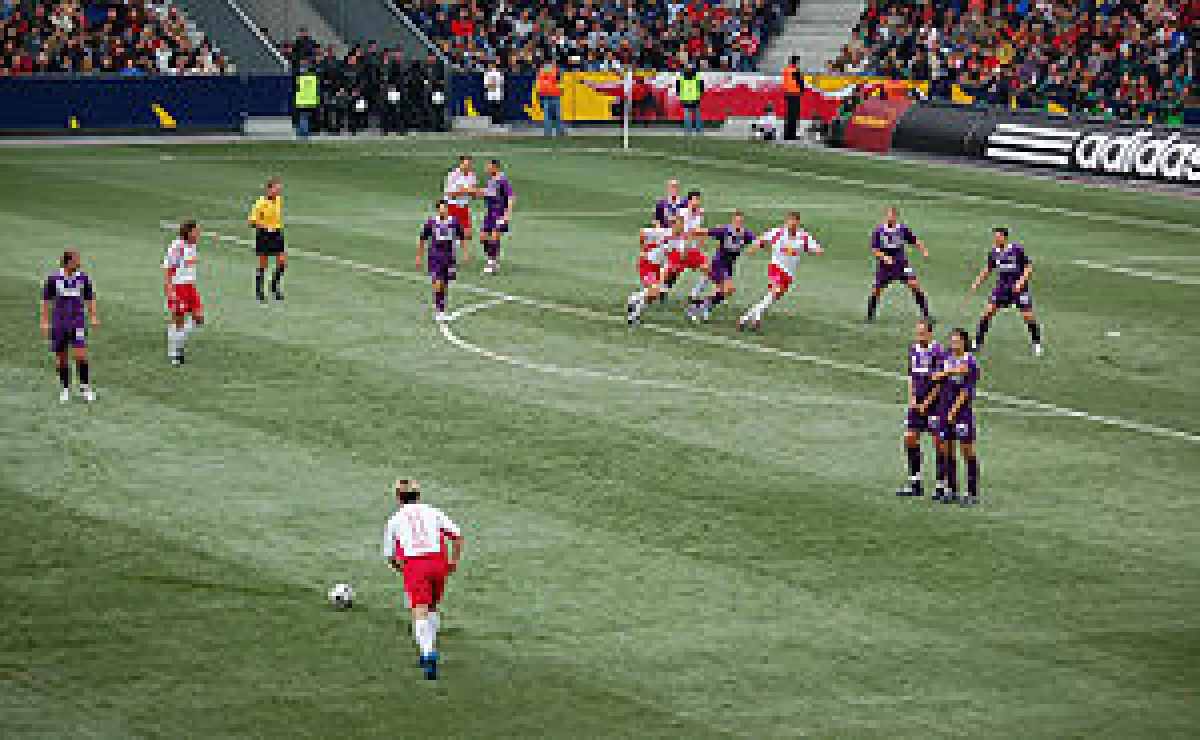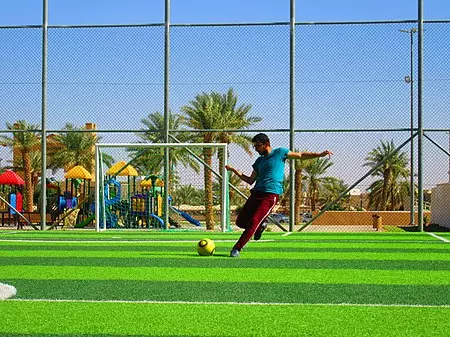 A direct free kick being taken by the team in white and red.
A direct free kick being taken by the team in white and red.
A free kick is an essential method of restarting play in association football. It is awarded after an infringement of the laws by the opposing team. Free kicks provide teams with a strategic opportunity to score a goal or create a scoring opportunity. In this article, we will explore the different types of free kicks, the procedure for taking them, and the strategies involved in executing them successfully.
Direct and Indirect Free Kicks
Free kicks can be categorized into two types: direct and indirect. These two types are distinguished as follows:
- Direct Free Kicks: An attacking goal can be scored directly from a direct free kick. These kicks are awarded for more serious offenses such as handball and most types of foul play. However, a direct free kick cannot be awarded in the offending team's penalty area. If an offense occurs in the penalty area, a penalty kick is awarded instead.
- Indirect Free Kicks: Indirect free kicks are awarded for less serious offenses. They cannot result in a goal directly being scored. These kicks are taken from the place where the infringement occurred and can be awarded for offenses committed anywhere on the field.
 A free kick being imitated.
A free kick being imitated.
The Procedure of Taking a Free Kick
Taking a free kick involves a series of steps and requirements:
Signal
The referee signals an indirect free kick by raising the arm vertically above the head, while a direct free kick is signaled by extending the arm horizontally. This helps both teams and spectators to identify the type of free kick being awarded.
Location
The free kick is taken from the place where the infringement occurred, with a few exceptions:
- If the offense occurred within the kicking team's own goal area, the free kick may be taken from anywhere within the goal area.
- If an indirect free kick is awarded for an offense within the offending team's own goal area, the kick is taken from the nearest point on the goal area line parallel to the goal line.
- If the offense took place outside the field of play, the free kick is taken from the boundary line closest to where the offense occurred.
- For certain technical offenses, such as a substitute starting a match without the referee being informed or a player entering the playing area without permission but without interfering with the game, play is restarted with an indirect free kick from the place where the ball was when play stopped.
Kick
To properly execute a free kick, certain conditions must be met:
- The ball must be stationary and on the ground.
- Opponents must be at least 9.15 meters (10 yards) away from the ball until it is in play, except for those standing on their own goal-line between the goal-posts.
- If the free kick is taken from within the kicking team's penalty area, opponents must be outside the penalty area.
- If the defending team forms a "wall" of three or more players, all attacking players must be at least 1 meter (1 yard) from the wall until the ball is in play.
- The ball becomes in play as soon as it is kicked and clearly moves. It must be kicked by a foot and cannot be picked up by the goalkeeper. However, a free kick can be taken by lifting the ball with one or both feet simultaneously.
- Feinting to take a free kick to confuse opponents is legal, unlike in penalty kicks where feinting is prohibited once the run-up has been completed.
- A player may be penalized for an offside offense from a free kick, allowing for strategic defensive positioning.
Scoring Opportunities and Strategies
 Guilherme Finkler (blue, no. 7) attempts to score from a direct free kick for Melbourne Victory FC.
Guilherme Finkler (blue, no. 7) attempts to score from a direct free kick for Melbourne Victory FC.
Direct free kicks awarded near the opponent's goal can often lead to scoring opportunities, either from the kick itself or from an ensuing set piece. These situations require careful planning and execution. Teams often have designated free kick takers who possess the skill and technique to strike the ball effectively.
There are various techniques used with direct free kicks. Some players choose to strike the ball with maximum force, using the laces of their boots. Others attempt to curl the ball around the wall or over the goalkeeper using the inside or outside of their foot. Skilled free kick takers may opt for a minimal spin technique, causing the ball to behave unpredictably in the air, similar to a knuckleball pitch in baseball. Another approach is to drive the shot low and under the wall using the inside of the foot. Crossing the ball to taller teammates, such as center-backs or strikers, for a header on goal is another common strategy.
Defending against free kicks is equally important. The defending team often constructs a "wall" of players to obstruct the direct path to the goal. This wall is positioned to screen the near side post, while the goalkeeper typically covers the far side post. To counteract this defensive strategy, attacking teams may employ tactics such as deceptive runs, multiple players feinting to take the kick, or surprise shots aimed at exploiting the defense's poor positioning.
Over the years, the rules and regulations surrounding free kicks have evolved to ensure fair play and maintain the integrity of the game. Referees play a crucial role in enforcing these rules and ensuring that free kicks are taken correctly.
In conclusion, free kicks are a fascinating aspect of football that requires skill, strategy, and precision. Whether delivering a powerful strike at goal or setting up a scoring opportunity, mastering the art of the free kick can make a significant difference on the field.
















